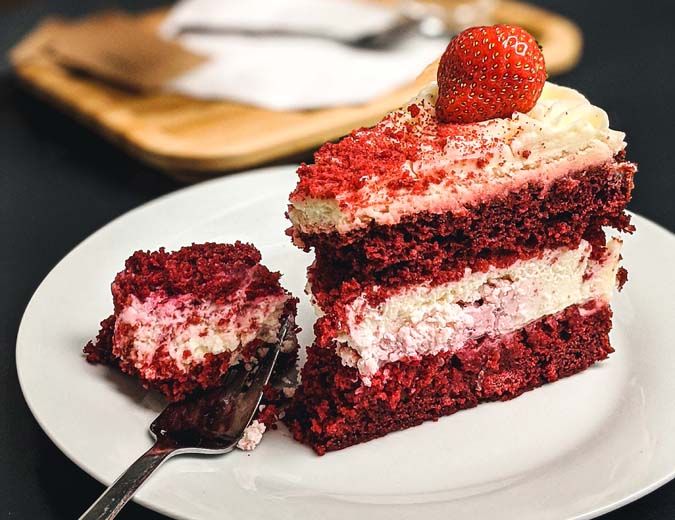Few desserts evoke as much intrigue – and as many questions – as red velvet cake. With its striking crimson crumb, delicate cocoa notes, and cream cheese frosting, this cake has long straddled the line between nostalgic indulgence and culinary mystery. Its origins are often contested, and its colour the subject of both science and folklore.
Red velvet’s earliest ancestors can be traced back to the 19th century, when bakers discovered that cocoa powder could soften flour’s proteins, producing a ‘velvet’ texture. These so-called velvet cakes – light, moist, and tender – quickly distinguished themselves from the denser sponges and pound cakes of the era.
The addition of cocoa was subtle, more about texture than taste, and the resulting cakes often took on a reddish hue due to a reaction between natural cocoa and acidic ingredients like buttermilk or vinegar. In this sense, red velvet began not as a dramatic showstopper, but as a quiet evolution in baking technique.
It wasn’t until the 20th century that the cake’s modern identity took shape. During the Great Depression, a food colouring company named Adams Extract is believed to have popularised the bold red version we recognise today, using the cake to market their dyes and flavourings.
With its theatrical flair and comforting flavours, red velvet took off in American kitchens, particularly in the South, where it became a staple of family gatherings and church socials. Over time, the cake acquired a cultural resonance – a symbol of Southern hospitality, post-war optimism, and later, a kind of vintage Americana.
Red velvet cake’s preparation has changed little in essence but much in detail. The original acidic reaction that produced a mild red hue is no longer relied upon, with most modern recipes calling for red food dye to ensure its signature colour. Cream cheese frosting, now considered essential, only became popular in the mid-20th century, replacing earlier versions that used ermine icing – a cooked flour-and-milk base with butter and sugar.
Today, bakers experiment with beetroot for natural colouring, add espresso to intensify the cocoa, or fold in unexpected flavours such as raspberry or orange blossom.
Though firmly rooted in American baking traditions, red velvet has found admirers far beyond its birthplace. In Cyprus, it is now a frequent offering in patisseries and café displays, particularly around Valentine’s Day or festive seasons, where its dramatic appearance adds a sense of celebration. While not tied to local traditions, the cake’s balance of richness and lightness resonates with Cypriot tastes.







Click here to change your cookie preferences